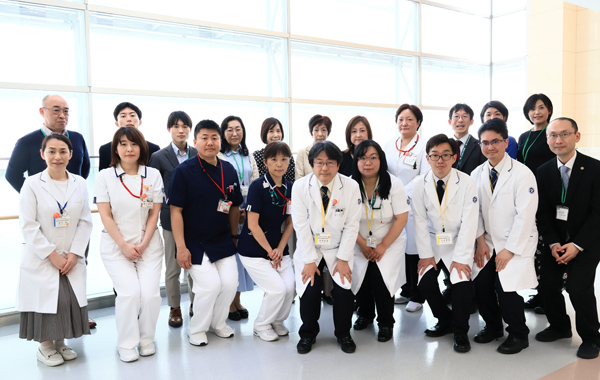Department of Patient Safety
Director:NAGAO, Yoshimasa (Professor)
Provide safe and high-quality medical care
This is the most important policy in Nagoya University Hospital. Patient safety is one of the core elements of quality in health and medical care.
Our mission is to fully address the medical risks and to ensure patient safety.
Nagoya University Hospital is the only accredited national university hospital in Japan by JCI (Joint Commission International).
Our goal is to continue to be the safest and highest quality national university hospital in Japan.
Objectives
- Introduce the medical safety system based on JCI, and fully comply with the safety confirmation according to the International Patient Safety Goals.
- Analyze incident and accident reporting, and reflect it in staff education and system improvement, and strive to prevent medical accidents.
- Aim to provide high-quality medical services while visualizing various issues in the hospital using quality control methods and measuring the improvement effect.
- If unlikely malpractice occurs, provide accurate information to the patient and do our best to cooperative treatment and to minimize of damage.
- Investigate the facts of medical accidents, evaluate processes, and prevent recurrence according to the medical accident investigation system.
- Establish highly-transparent, strong and substantial safety culture with making patient rights and safety first.
Staff
The department consists of a total of 20 members: one full-time professor, three full-time doctors, one full-time pharmacist, four full-time nurses, one full-time lawyer, one full-time engineer, and nine administrative staff. In addition, there are about 150 patient safety managers appointed in each department in the hospital. All these people and all staff work together for patient safety.
Scope of Medical Services
- Establishment and monitoring of patient safety system complied with the JCI Standards.
- Collect and analyze incident and accident reports from all departments.
- Conduct communication conferences, safety training and student education in the hospital.
- Measure the improvement effect using the quality management method.
- Start of the treatment cooperation system that can address to serious accidents throughout the hospital.
- Verify the adverse events by third-party (Medical accident investigation).
- Provide an appropriate informed consent system.
‒Wish all patients can receive satisfactory medical care in peace‒






